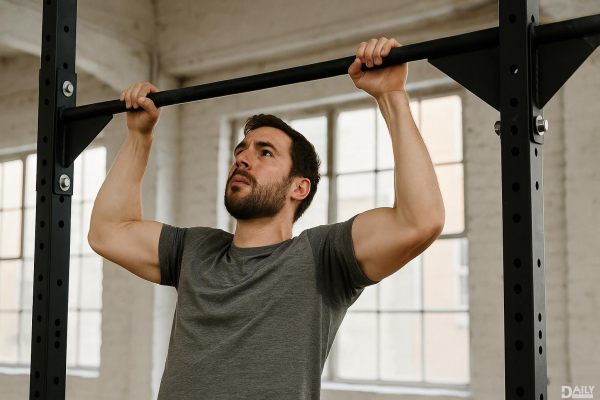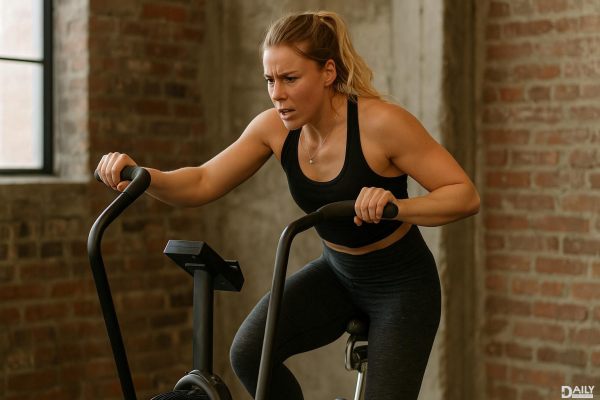If you've ever felt like bicycle crunches are more of a neck workout than an ab burner, you're not alone. This classic core exercise is notorious for being butchered in gyms across America, with well-meaning fitness enthusiasts turning it into a half-hearted elbow flail instead of the powerhouse oblique and deep-core engagement it's meant to be. The truth? When done right, bicycle crunches are one of the most effective total-core activators out there—but only if you ditch the sloppy form that's probably making your neck scream louder than your abs.
Why Your Bicycle Crunches Aren't Working
really driving that opposite elbow to knee connection by engaging your obliques and TVA (those deep corset-like muscles that stabilize your spine). If you're not feeling that deep burn along your sides and lower abs, you're likely just going through the motions rather than activating the right muscle groups.
The Anatomy of a Perfect Bicycle Crunch
Here's how to transform your wimpy bicycle into a core-crushing powerhouse move: Start lying flat with hands behind your head (fingers lightly supporting, not pulling). Lift your knees to 90 degrees and initiate the movement by drawing your belly button toward your spine—this engages your TVA. As you extend one leg straight (hovering a few inches off the ground), rotate your torso to bring the opposite elbow toward the bent knee. The key? That rotation should come from your ribs twisting, not just your arm swinging across. Pause for a second at the peak contraction to really feel your obliques working before slowly returning to center. Alternate sides with control—imagine moving through thick honey rather than air.
Common Mistakes That Sabotage Your Results
Beyond the head-yanking we mentioned earlier, watch out for these form fails: Rushing through reps (speed ≠ effectiveness), letting your extended leg drop too low (keep it hovering to maintain tension), and allowing your lower back to arch (keep that TVA engaged to protect your spine). Another sneaky error? Not fully completing the rotation. Many people stop when their elbow is in line with their sternum—you should aim to cross that midline slightly to maximize oblique engagement. And if you find yourself holding your breath? That's your cue to slow down. Proper core engagement requires controlled exhales as you twist.
Prep Moves to Master Before Attempting Bicycles
If you're struggling with the coordination or core awareness needed for proper bicycle crunches, Codio recommends building your foundation with these exercises first: Dead bugs (teaches anti-extension and contralateral limb control), bird dogs (develops rotational stability), and forearm planks with alternating toe taps (trains your core to stay engaged while limbs move). Spend 2-3 weeks mastering these before graduating to full bicycle crunches. You'll be shocked at how much more effective your bicycles become when you've developed this baseline of core control.
How to Progress Once Bicycles Feel Easy
When you can perform 20 controlled bicycle crunches with perfect form (no neck strain, full rotations, constant core tension), try these advanced variations: Add ankle weights (increases resistance for hip flexors), hold a medicine ball or plate behind your head (increases rotational challenge), or perform them on a decline bench (amplifies gravity's pull). For an extra brutal twist, try tempo bicycles—taking 3 full seconds to complete each rotation. This eliminates momentum and forces your muscles to work harder throughout the entire range of motion.
When to Skip Bicycle Crunches Altogether
Despite their benefits, bicycle crunches aren't for everyone. If you have existing neck issues, herniated discs, or diastasis recti, the spinal flexion + rotation combo might aggravate your condition. Pregnant individuals (especially in later trimesters) should also avoid them due to the intra-abdominal pressure they create. In these cases, focus on isometric core work like planks or rotational moves that keep your spine neutral, such as Pallof presses or standing cable chops.
At the end of the day, bicycle crunches deserve their reputation as a gold-standard ab exercise—but only when performed with precision. Ditch the ego, slow down, and focus on quality over quantity. Your six-pack aspirations will thank you when you stop treating bicycles as a mindless ab routine and start approaching them as the serious core builder they are. Now if you'll excuse us, we need to go ice our obliques after that brutal tempo set.
























